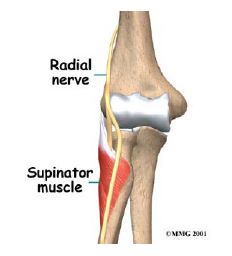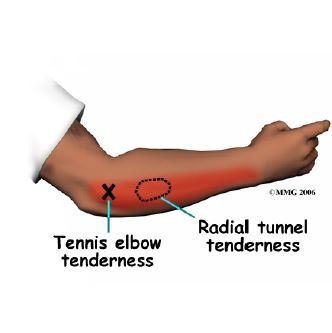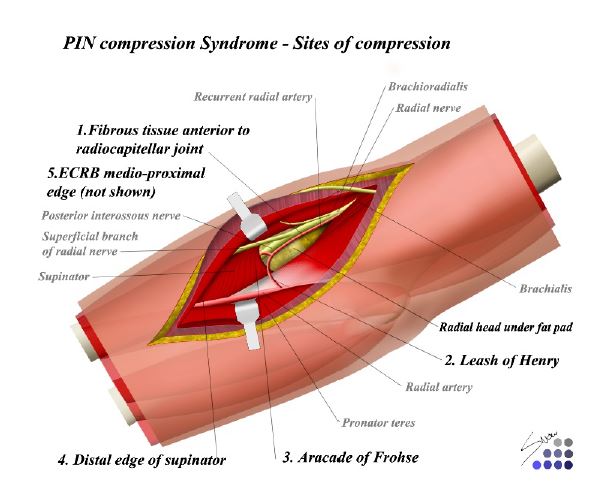Radial Neuritis/Radial Tunnel Syndrome
What is Radial Tunnel Syndrome?
Radial Tunnel Syndrome or Radial Neuritis is a confusing condition affecting the terminal branch of the Radial nerve in the arm. It is called the Posterior Interosseous Nerve. It is often misdiagnosed as Lateral Epicondylitis due to the prevalence of that condition. It is a constriction or irritation of the PIN in the proximal, lateral arm.
What are the symptoms of Radial Neuritis?
Pain in the proximal lateral forearm is most common. It usually does not have numbness associated with it. It can also occur at the same time as lateral epicondylitis making the diagnosis more confusing. The pain is distal or more toward the hand than tennis elbow. There is pain with grip, activities and fine control of the fingers.
Who gets Radial Tunnel Syndrome?
Patients are usually 35-65. Men and women are affected equally. Radial Tunnel can occur in tennis players and in golfers. It also happens in those with true overuse conditions with repetitive wrist motion, especially rotation.
What causes Radial Tunnel Syndrome?
We do not know for sure what is occurring, but we believe the Posterior Interosseous Nerve is compressed at the proximal border of the supinator muscle. It has a thick fibrous tendon-like border that the nerve must travel under. The fibrous band becomes thicker and therefore less compliant causing constriction of the nerve. Lesser common causes can be ganglion cysts from the elbow and vascular malformations.



